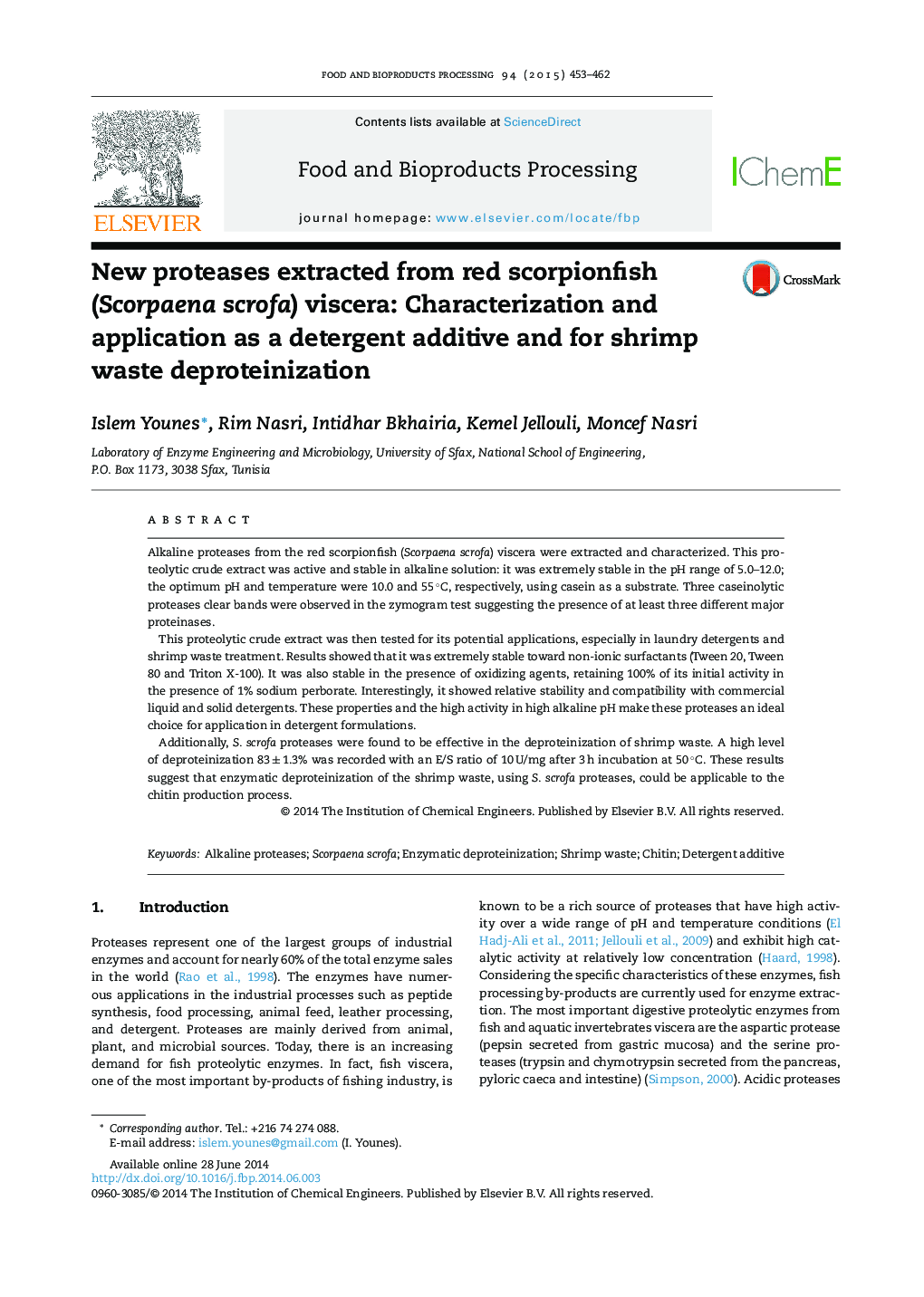| Article ID | Journal | Published Year | Pages | File Type |
|---|---|---|---|---|
| 18938 | Food and Bioproducts Processing | 2015 | 10 Pages |
•Alkaline proteases from S. scrofa viscera were extracted and characterized.•The optimum pH and temperature were 10.0 and 55 ̊C, respectively.•The crude enzyme was extremely stable in alkaline conditions and towards detergents.•The crude enzyme was highly recommended for application in detergent formulations.•The crude enzyme was also recommended for shrimp shell deproteinization.
Alkaline proteases from the red scorpionfish (Scorpaena scrofa) viscera were extracted and characterized. This proteolytic crude extract was active and stable in alkaline solution: it was extremely stable in the pH range of 5.0–12.0; the optimum pH and temperature were 10.0 and 55 °C, respectively, using casein as a substrate. Three caseinolytic proteases clear bands were observed in the zymogram test suggesting the presence of at least three different major proteinases.This proteolytic crude extract was then tested for its potential applications, especially in laundry detergents and shrimp waste treatment. Results showed that it was extremely stable toward non-ionic surfactants (Tween 20, Tween 80 and Triton X-100). It was also stable in the presence of oxidizing agents, retaining 100% of its initial activity in the presence of 1% sodium perborate. Interestingly, it showed relative stability and compatibility with commercial liquid and solid detergents. These properties and the high activity in high alkaline pH make these proteases an ideal choice for application in detergent formulations.Additionally, S. scrofa proteases were found to be effective in the deproteinization of shrimp waste. A high level of deproteinization 83 ± 1.3% was recorded with an E/S ratio of 10 U/mg after 3 h incubation at 50 °C. These results suggest that enzymatic deproteinization of the shrimp waste, using S. scrofa proteases, could be applicable to the chitin production process.
